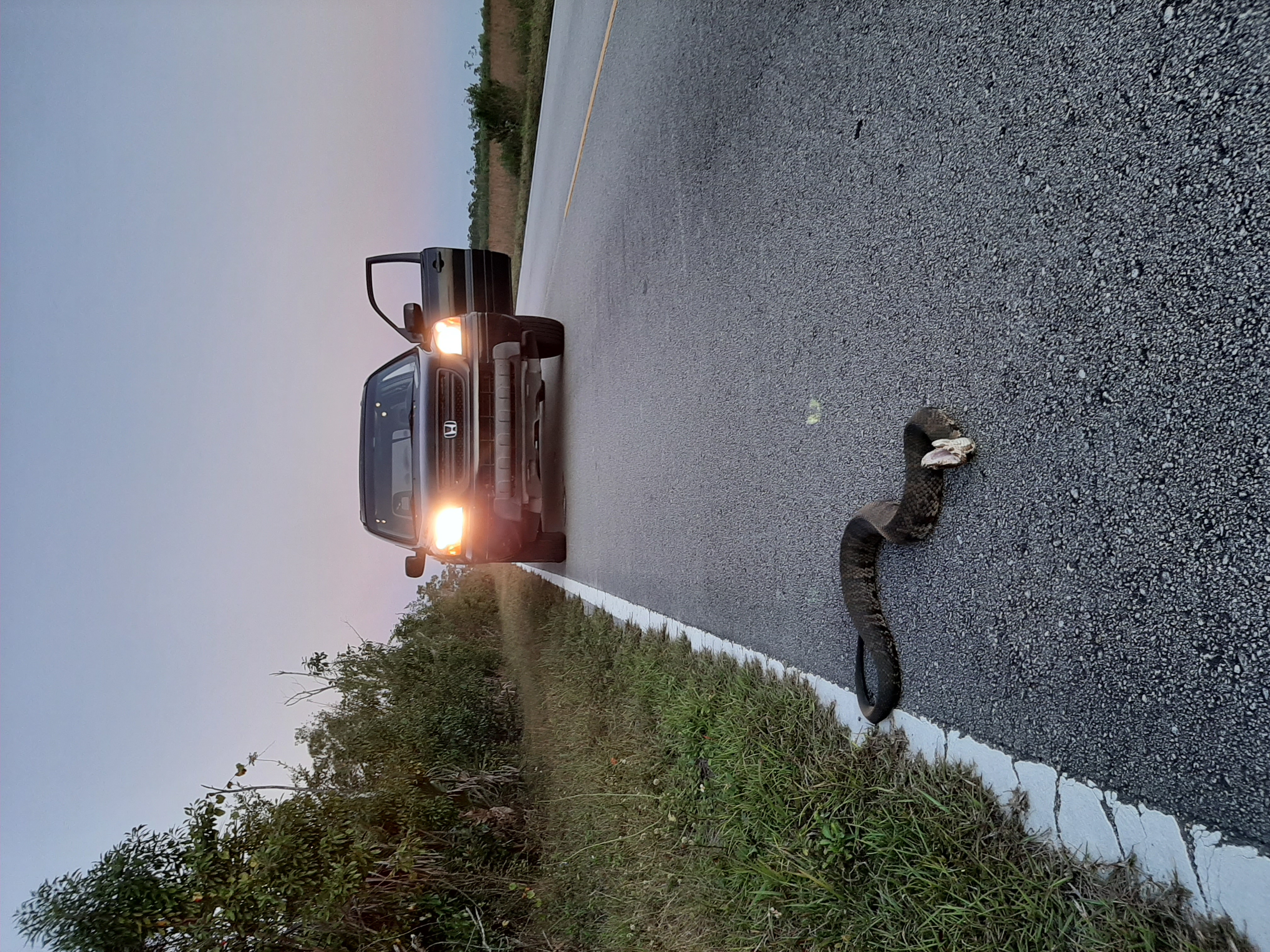CORRELATES OF MOVEMENTS ACROSS ROADS IN AN EVERGLADES SNAKE ASSEMBLAGE
DOI:
https://doi.org/10.17161/jnah.v2024i1.20258Keywords:
Climate change, conservation, Everglades, snakesAbstract
Data associated with a 46-month road survey in Everglades National Park (Everglades National Park), U.S.A., were used to examine selected life history traits of 19 snake species in a hydrologically fluctuating system subject to droughts and floods. A distance of 314.8 km was driven beginning at dusk for each of 204 visits during March 2008–December 2011. Habitats encompassed uplands of Long Pine Key, freshwater glades of Pahayokee, and interface with saline glades at Mahogany Hammock. The Florida Cottonmouth, Agkistrodon conanti, Florida Watersnake, Nerodia fasciata pictiventris, Peninsula Ribbonsnake, Thamnophis sauritis sackenii, and Eastern Gartersnake, T. sirtalis sirtalis, accounted for 68.6% of 1,312 individuals during three calendar years of surveys of 2009–2011. Our study included one native and one exotic species undetected in an earlier road survey conducted in on Long Pine Key in the mid-1980s. Species overlap among the three distinct habitats of our study was extensive, but dominant species and relative abundances varied among them. Comparison of relative abundance on Long Pine Key with an earlier study indicated a recent shift towards more aquatic species but fewer species and total individuals. Adult body sizes and reproductive traits of selected species of this study did not differ from those of other samples from Everglades National Park. However, among species for which comparisons were possible, seasonal activity patterns were not unanimously similar. Incidence of roadkill was highest during months of least snake movements on the roads. Snakes moved in association with air temperatures and rainfall, but not water table level. However, overall numbers of snakes dropped significantly during 2011 when the water table was at its lowest. Aquatic and semi-aquatic species short-hydroperiod freshwater wetlands were negatively affected. Abundance of the Red Cornsnake, Pantherophis guttatus, a semi-arboreal species, responded negatively to low water. Abundances of deep-water aquatic snakes were unaffected by the low water table of 2011. Among the species negatively affected in abundance by low water, recruitment increased in three species and decreased in three species. Recruitment increased in deep-water snakes. If current climate change trajectories hold, the Everglades will experience a series of anthropogenic successional seres of predictable ever-diminishing habitat for most and ultimately all of the snake species presently inhabiting the southern Everglades.

Downloads
Published
Issue
Section
License
Copyright (c) 2024 Walter Meshaka, Jr.; Frank J. Mazzotti, Michael R. Rochford

This work is licensed under a Creative Commons Attribution-NonCommercial 4.0 International License.
Copyright is held by the authors. Articles in JNAH are made available under a Creative Commons Attribution-NonCommercial 4.0 International license.
